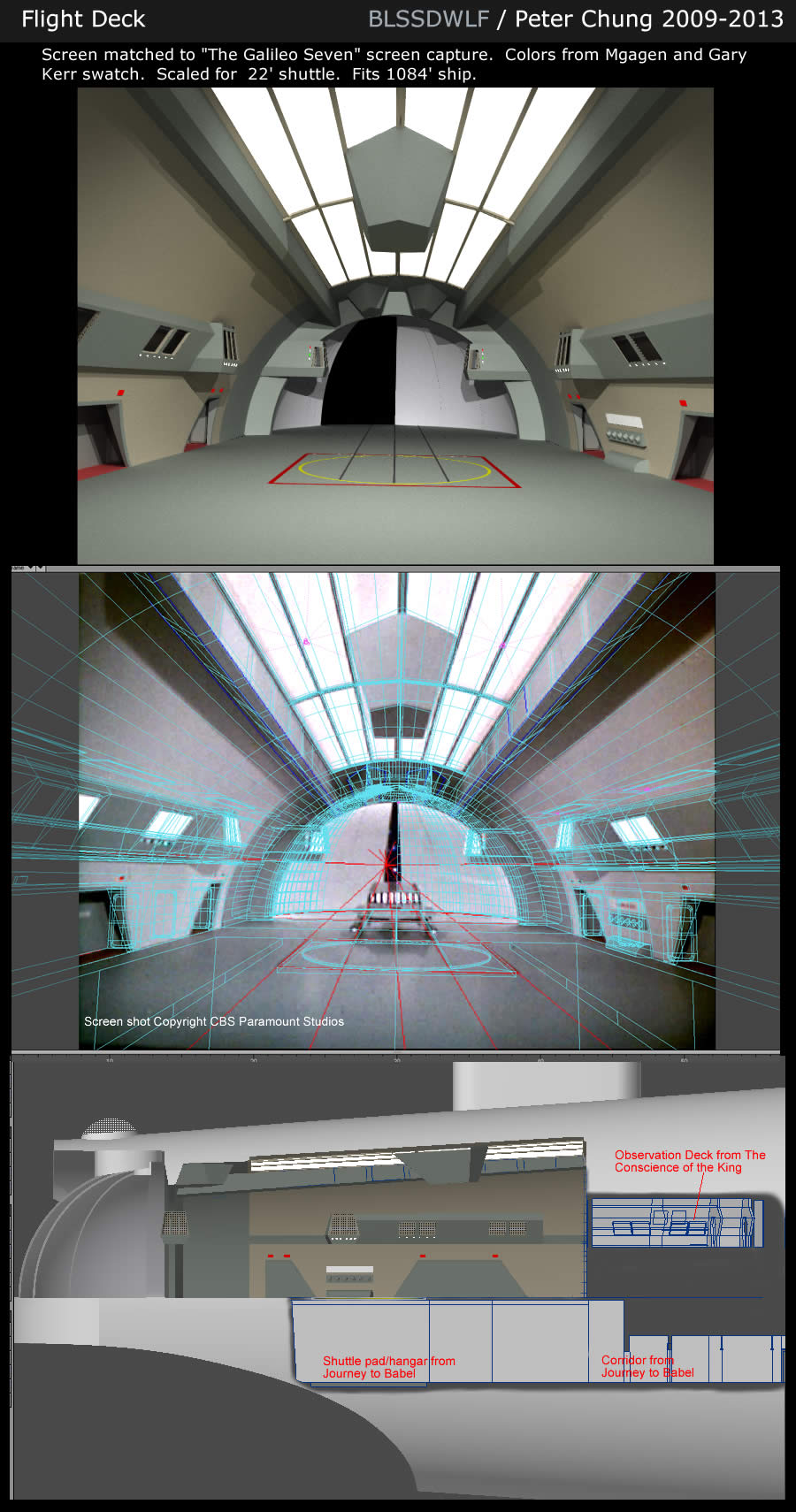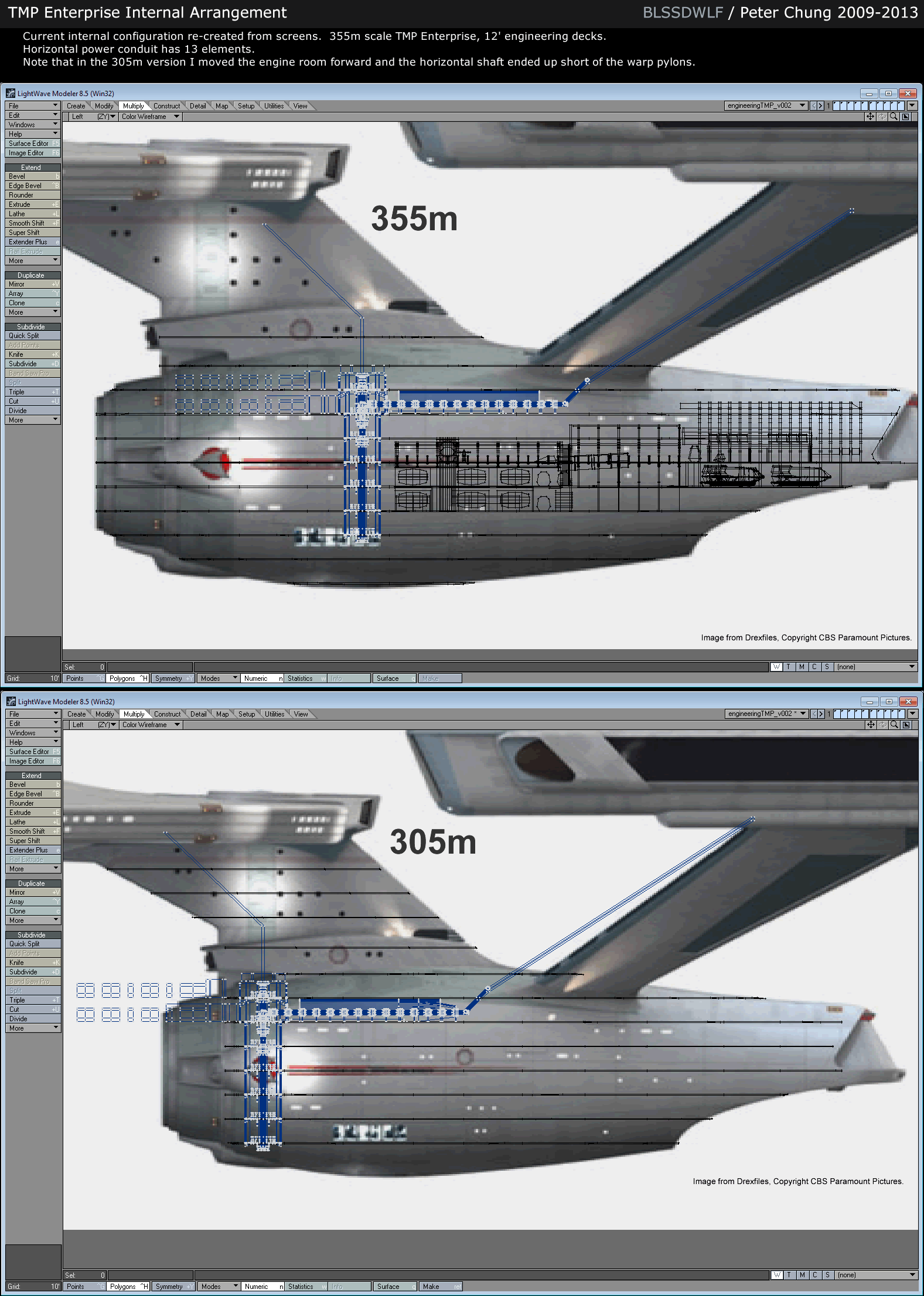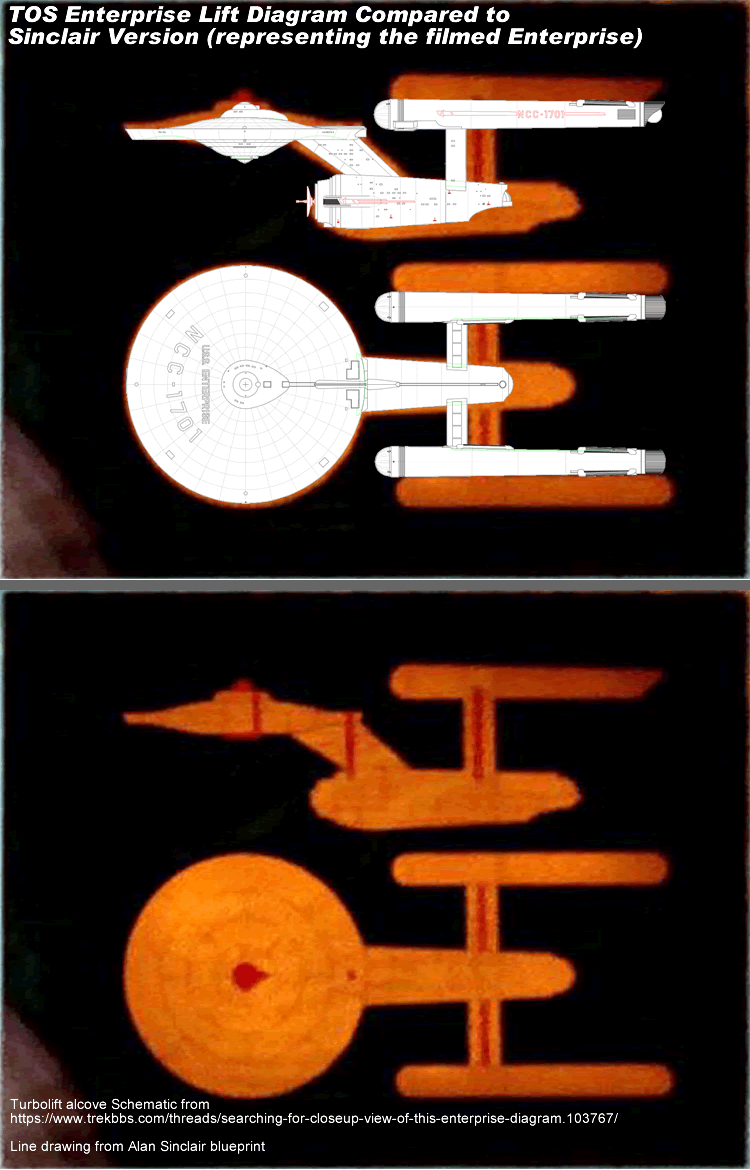I don't follow. Wouldn't that same problem exist for the TMP Enterprise since the flight deck and elevator layout is even larger?
Actually the diagram next to the
TOS bridge turbolift isn't that clear. Not only that, have you compared the diagram to the actual ship? From examination it's apparent that the diagram is stylized since the engineering hull is enlarged and the nacelles and strut placement are different. Also, what is it actually trying to represent? Can we even say the length and size of the flight deck/shuttle bay is even accurate given the diagram appears to be not in correct proportion to the actual ship?
The thing with referencing a designer's illustration is that unfortunately it's not always reflected in the physical construction of the model or set. The actual flight deck as filmed and shown in the TV series is longer than what was drawn by Jefferies and ends up under the pylons.
So, going back to my comment about EC Henry's video - if you take in account the original FX the flight deck goes under the struts and therefor it isn't a structural reason to move to angled struts on the TMP Enterprise. But that's for the original FX version of TOS.
I do acknowledge that the TNG-universe version of the TOS Enterprise uses the short flight deck and EC Henry's thinking would be applicable for that version.













